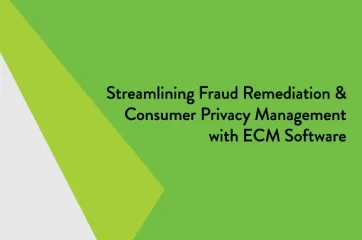Information Lifecycle Management (ILM)
Information Lifecycle Management (ILM) for financial institutions, such as banks and credit unions, is a strategic approach to managing data that encompasses the entire lifecycle of information, from its creation to its eventual disposition. In this context, the lifecycle typically includes several key phases:
Creation and Acquisition:
Data is generated through various channels such as customer transactions, account openings, loan applications, and internal operations. It can also be acquired through external sources like market data providers or regulatory bodies.
Classification and Categorization:
Upon creation, data is classified based on its sensitivity, regulatory requirements, and business value. For instance, personally identifiable information (PII) or financial records may require higher levels of protection and longer retention periods compared to transactional data.
Usage and Access:
During its active use, data is accessed and utilized by authorized personnel for various purposes including customer service, financial reporting, risk management, and compliance monitoring. Access controls and encryption are often implemented to safeguard sensitive data from unauthorized access or breaches.
Storage and Archiving:
As data ages or becomes less frequently accessed, it transitions from primary storage to secondary storage or archival systems. This transition optimizes storage resources and ensures that data remains accessible for compliance, historical analysis, or legal purposes.
Retention and Disposal:
Financial institutions must adhere to regulatory requirements regarding data retention periods. Data that reaches the end of its retention period or is no longer needed for business purposes undergoes secure disposal or archival. This process involves using data destruction methods that ensure information cannot be reconstructed or accessed inappropriately.
Compliance and Risk Management:
Throughout the information lifecycle, financial institutions must maintain compliance with industry regulations such as GDPR, CCPA, HIPAA, and financial regulations like GLBA and PCI-DSS. Compliance entails not only adhering to data protection and retention requirements but also demonstrating accountability in data handling practices to mitigate risks of data breaches or non-compliance penalties.
Information lifecycle management in financial institutions is crucial not only for managing operational efficiencies and reducing storage costs but also for protecting sensitive customer information and maintaining trust with stakeholders. By implementing comprehensive data governance frameworks and leveraging technology solutions like data encryption, automated data classification, and secure cloud storage, banks and credit unions can effectively manage their information assets throughout their entire lifecycle. This approach not only supports regulatory compliance but also enhances data security and operational resilience in an increasingly digital and interconnected financial landscape.
Learn how Alogent's process automation solutions, FASTdocs and AccuAccount, optimize your document and information management, supporting a robust information lifecycle management strategy.














